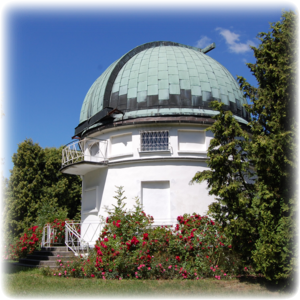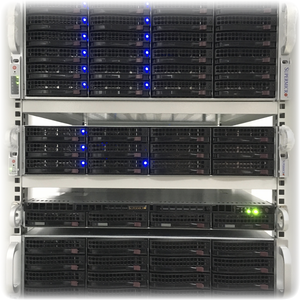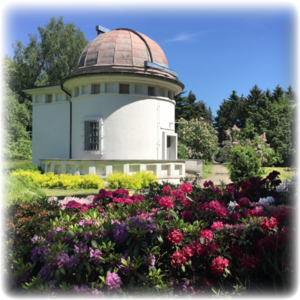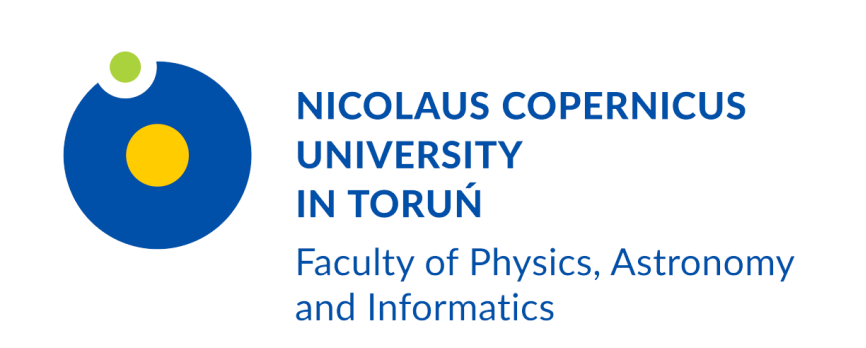 RADIOTELESCOPE RT4 (32m)
RADIOTELESCOPE RT4 (32m)
The 32m precise parabolic antenna, designed by Z.Bujakowski and his team and built in Poland, is fully steerable classical Alt-Az mounted Cassegrain. It’s main parabolic reflector is made of 336 panels, each with an accuracy better than 0.35 mm rms. The 32m antenna with its high quality auxiliary instrumentation provides Polish astronomers with the unique tool to study the Cosmos. The telescope is part of the European and world-wide network of interferometers – VLBI. VLBI studies of distant galaxies and quasars, the search for new planetary systems around pulsars, the study of interstellar and stellar molecules are the subjects to be mentioned here. The size of the antenna, geographic position (important extension to the east) and a highly professional team of scientists and engineers make the addition of Toruń the significant improvements to the European VLBI Network. The instrument is intended for use by all Polish astronomers as a national facility.
 RADIOTELESCOPE RT3 (15m)
RADIOTELESCOPE RT3 (15m)
The 15-meter telescope design by Z. Bujakowski is based on an element of the Westerbork Synthesis Radio Telescope. It is an equatorial mounted, solid surface, parabolic dish with the prime focus optics. Since opening of the telescope in 1977 a number of observing projects has been pursued. The foremost of them is the participation in VLBI enterprise (the first successful observations were done at 6 cm wavelength on 21st May, 1981). To this end, the telescope is equipped with non-cooled receivers for the standard frequencies of 327, 609, 1420, 1660 and 5,000 MHz, the rubidium frequency standard, and the Mark IIc VLBI terminal (built entirely by the TRAO staff). Of the other projects mentioning deserves a pulsar monitoring, which begun at the early 80-ties. Presently, the antenna is used mainly as a training tool for students.
 90/60 cm SCHMIDT-CASSEGRAIN TELESCOPE (TSC)
90/60 cm SCHMIDT-CASSEGRAIN TELESCOPE (TSC)
This is a multi-purpose instrument that can be used as (1) a Cassegrain telescope with a 90 cm main mirror and a focal length of 1350 cm, (2) a Schmidt camera with a 60 cm correcting plate and a focal length of 180 cm. In the Cassegrain mode, the TSC works with a slit Copernicus Cassegrain Spectrograph (CCS) which is mounted in a Nasmyth focus. A Wright Instruments CCD camera with a CCD30-11-0-275 matrix is used as a detector. In the Schmidt camera mode, the TSC is used with a SBIG STL-11000M CCD camera (4008×2672 px, Grade 1, 9μm pixel size) which is equipped with a wheel with standard UBVR filters and is mounted in the main focus. The objective prisms (F2 with the dispersion of 25 nm/mm and BK7 with 50 nm/mm) can be used for low dispersion spectroscopy.
 60 cm CASSEGRAIN TELESCOPE
60 cm CASSEGRAIN TELESCOPE
This is a photometric telescope used for precise measurements of stars’ brightness. The optical system is based on a 60 cm parabolic mirror and has a focal length of 750 cm. An FLI ML16803 CCD camera is used as a detector. The instrument has a field of view of about 18×18 arcmin.
 SMALL CAMERA
SMALL CAMERA
This is a small but powerful instrument dedicated to mass-photometry surveys. The SBIG ST-7 commercial CCD camera with Kodak KAF-0400E chip is used as a detector, while an achromatic telephoto MC APO Telezenitar-M 135/2.8 constitutes the optical system. This configuration results in a field of view of 3×2 deg with the scale of 13.8 arcsec per pixel. Thousands of stars brighter than 12 mag can be recorded in a single frame. The Meade LX200 telescope is used as a mount for positioning the camera on required coordinates and tracking the sky rotation. The CCD camera with the lens is attached at the top of the telescope’s tube. The dome is controlled by a dedicated computer located in the dome building. The instrument was used by the Semi-Automatic Sky Survey in 2002-2007.
 HISTORIC DRAPER TELESCOPE
HISTORIC DRAPER TELESCOPE
Draper telescope is one of the first astrographs in the world. It was constructed in 1891 as “a monument” of an American spectroscopist physicist Henry Draper, which was used by his wife Anna Marie to support the ambitious program by Harvard Observatory run by Edward C. Pickering, which involved creating a catalogue of photographic and photovisual brightness of stars and their spectral classification. The telescope, sent from Cambridge in the USA, after necessary amendments was placed in Piwnice in spring 1949, and since July 1949 it was involved in regular observations. The research undertaken in Toruń was of the type to which that telescope was especially predestined, as it involved photographic photometry and spectrophotometry of stars. It was decided, on the one hand, to undertake an observational program aimed at defining the structure of the Galaxy and interstellar extinction in selected fields of the Milky Way, and on the other hand to conduct two-color photographic observations of selected Cepheid variables and RR Lyrae variables.
 COMPUTER CLUSTER HYDRA
COMPUTER CLUSTER HYDRA
Komputery służące do intensywnych obliczeń numerycznych: 172 rdzenie obliczeniowe (Intel Xeon, AMD Opteron), 0,5TB RAM, 180TB przestrzeni dyskowej.
 WEATHER STATION
WEATHER STATION
Weather monitoring in the Department is done using the WST7000 meteo station manufactured by IRDAM SA which was installed in July 2000.Description of mounting and detailed analysis of data collected in the years 2000 – 2008 are presented in Weather at TRAO since 2000 report.The current weather conditions are available at “weather Now” while the last 24 hours plots are available at ” last 24 hours“.
 INFORMATION FOR OBSERVERS
INFORMATION FOR OBSERVERS

 Piwnice k. Torunia, 87-148 Łysomice
Piwnice k. Torunia, 87-148 Łysomice